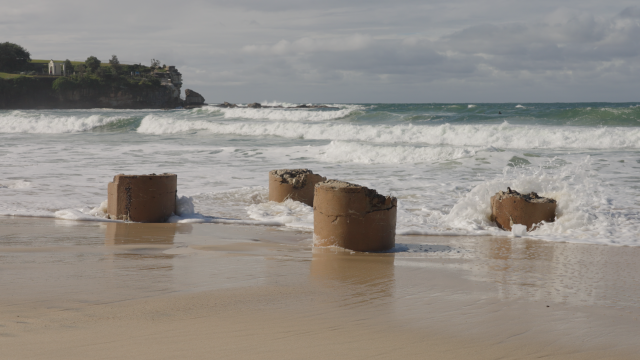Twelve timber and concrete pylons that were the remains of a pier built on Coogee Beach in the 1920s were dislodged from their sandy moorings as a result of a large swell and high tide caused by the low earlier this month.
The east coast low brought heavy rains and flooding also created rough seas and heavy swells that impacted the Randwick coastline, which pushed sand from Coogee Beach onto the boardwalk and uncovered the pylons.
Contractors hired by Randwick Council to return the sand to the shoreline found the fallen pylons in the early hours of Friday morning, 8 July, and moved them to the northern end of the beach to ensure safety of beachgoers and prevent the pylons from being washed back into the ocean.
The pylons have since been transported to Council’s depot where they will remain while their future is decided.
“It is always fun to see the reappearance of the pylons after a heavy storm or intense weather conditions, they are a lovely reminder of Coogee’s past,” said Deputy Mayor Kym Chapple.
“They aren’t heritage-listed items but we do understand their local cultural importance and the affection that many residents hold for them as well.
“As a changing climate continues to impact our beaches we need a plan for how to respond to that. In the meantime, we’ll take good care of the pylons as we investigate how we can best acknowledge their unique historical significance.”
Heavy storms would often reveal the pylons that remained from the Coogee Pier, which was built in July 1928 and stood until 1934 when it was demolished. They were last seen after a big storm in May 2020.








